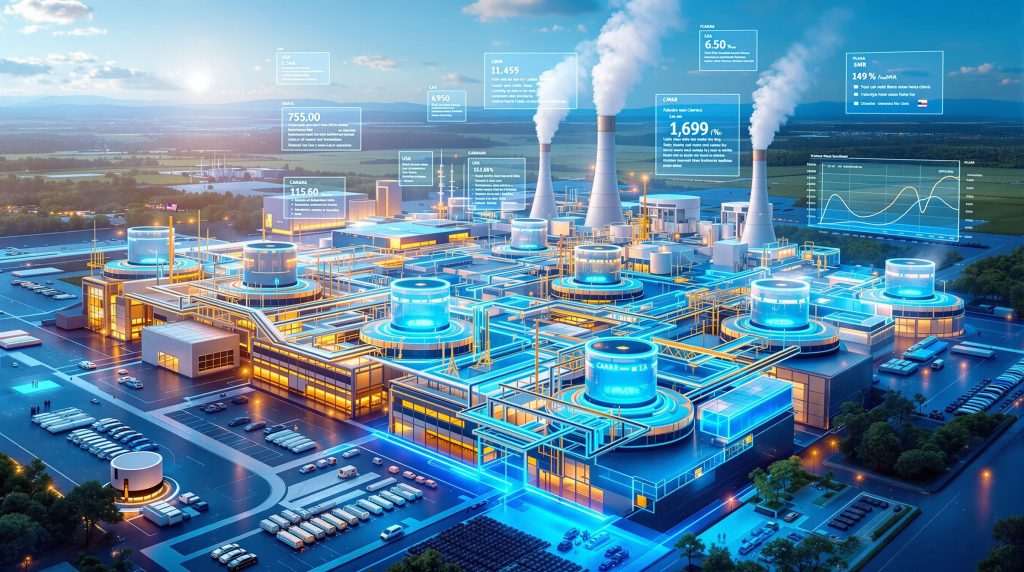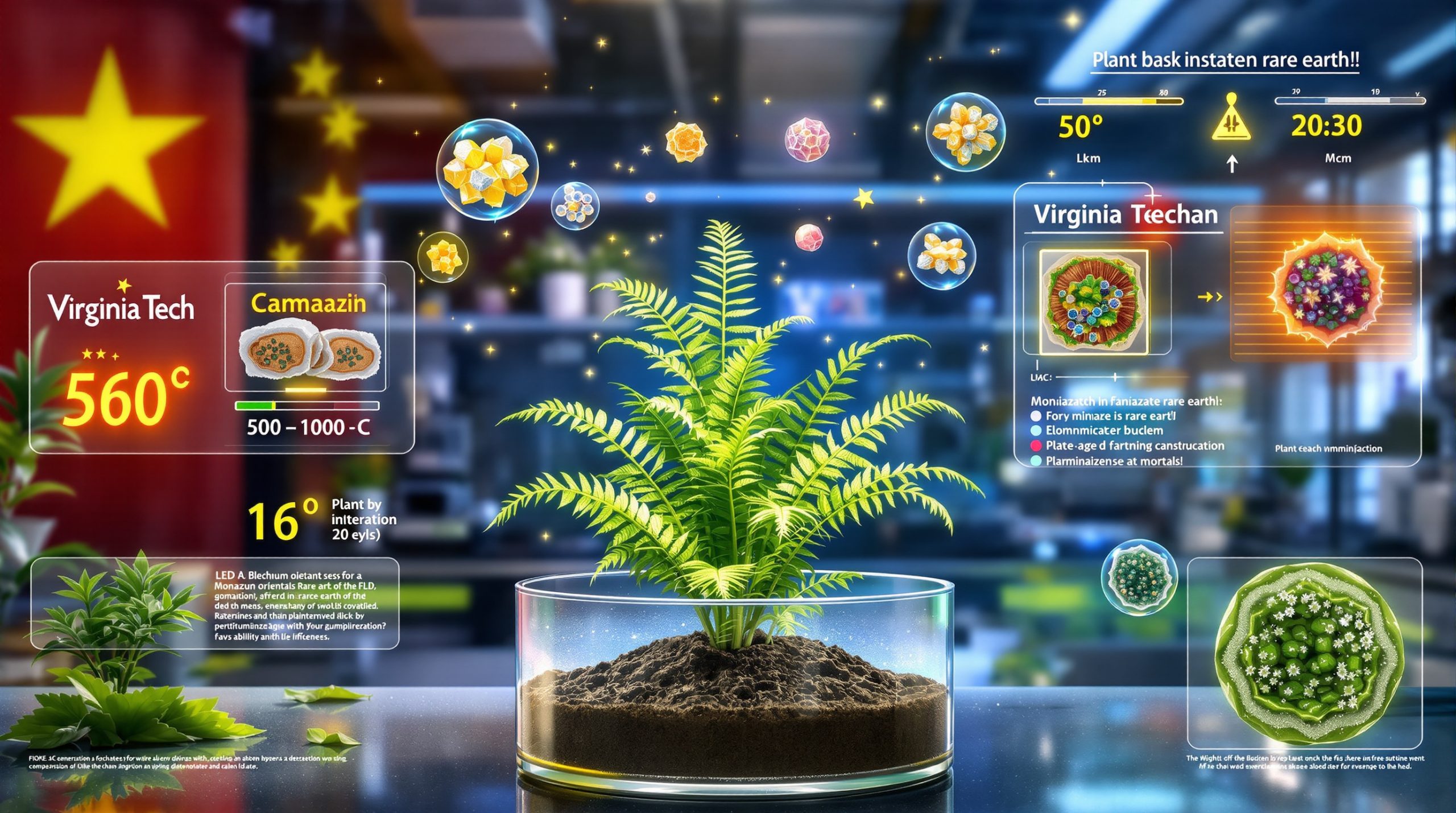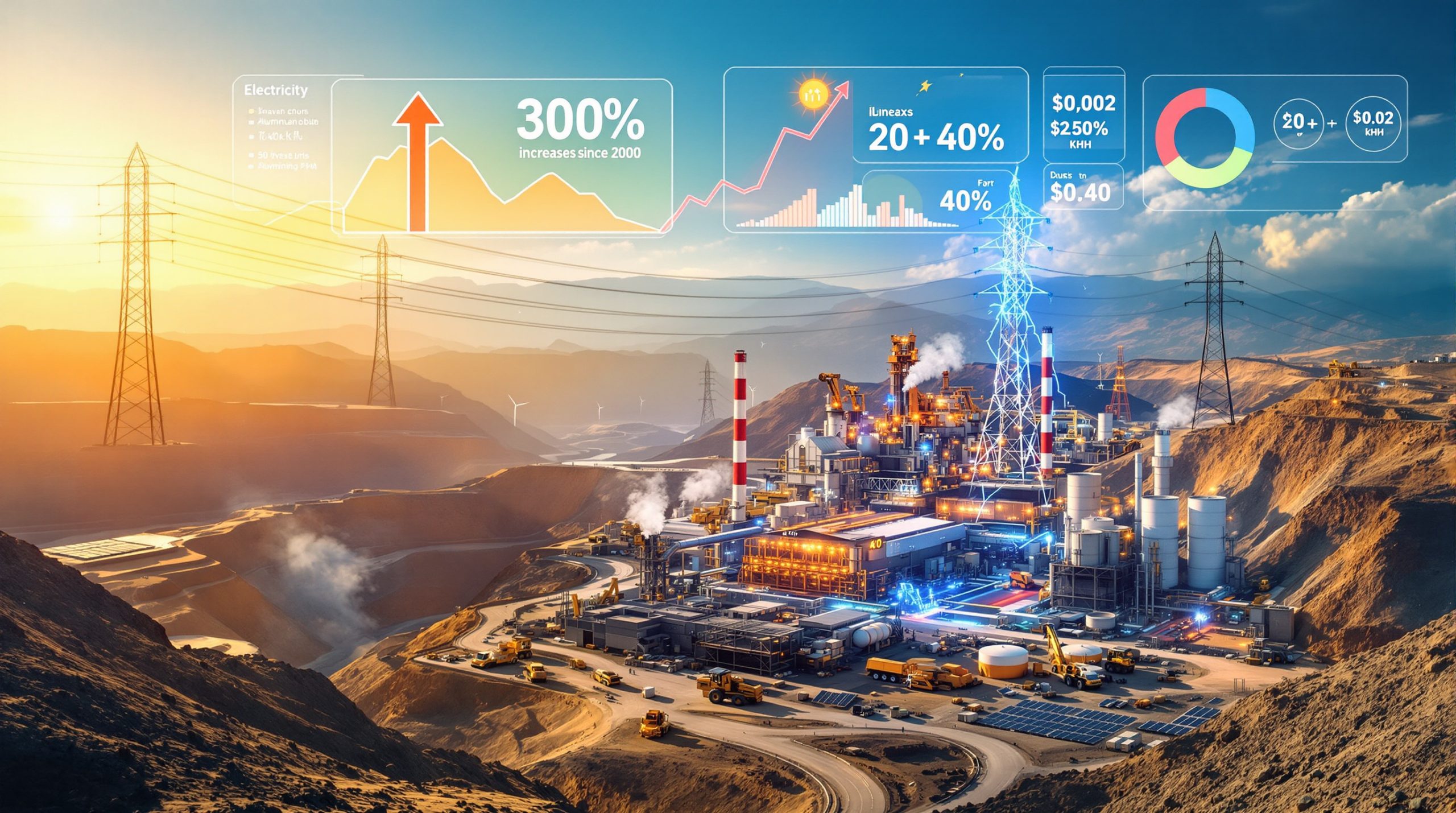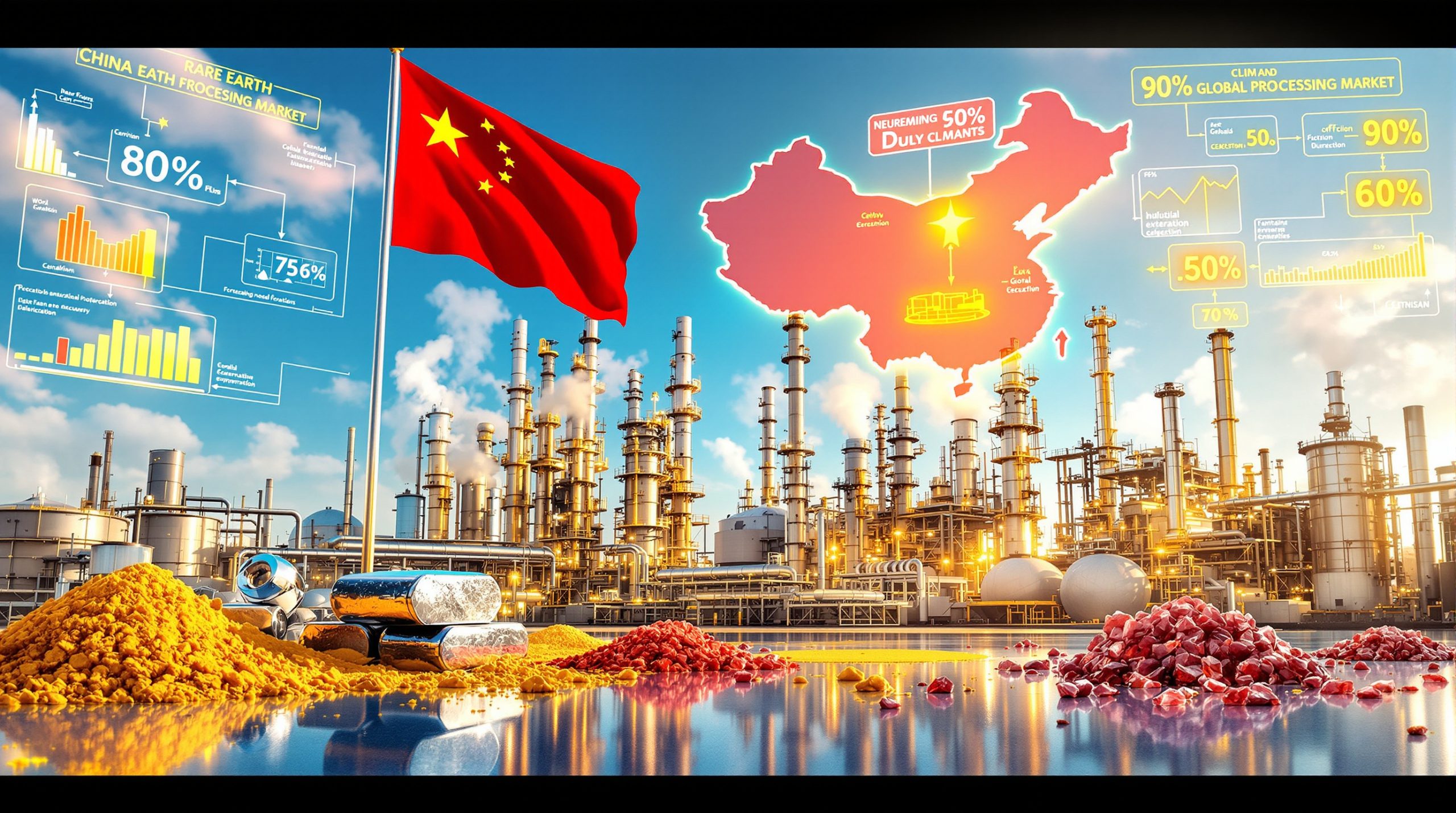What Are Small Modular Reactors and Why Do They Matter?
Small Modular Reactors (SMRs) represent a revolutionary approach to nuclear power generation, defined by their compact size and modular construction. Unlike conventional nuclear plants that typically exceed 1,000 megawatts electric (MWe), SMRs generate 300 MWe or less per module, allowing for scalable deployment based on energy needs.
The significance of SMRs extends beyond their size – they embody a fundamental reimagining of nuclear energy deployment:
-
Factory fabrication replaces traditional on-site construction, reducing build times from 10+ years to potentially 3-4 years
-
Standardized designs enable economies of series production rather than economies of scale
-
Passive safety systems utilize natural physics principles like gravity and convection rather than active mechanical systems
-
Reduced capital intensity lowers the financial barriers to nuclear deployment
These innovations position SMRs as potential game-changers in the clean energy transition, offering carbon-free baseload power with enhanced flexibility and reduced project risk compared to traditional nuclear plants.
Key SMR Technologies and Design Approaches
The SMR landscape encompasses diverse technological approaches, each with distinct advantages:
| Technology Type | Cooling Medium | Temperature Range | Notable Examples | Key Advantages |
|---|---|---|---|---|
| Light Water Reactors | Water | 280-330°C | NuScale, GE-Hitachi BWRX-300 | Regulatory familiarity, technological readiness |
| Molten Salt Reactors | Fluoride/chloride salts | 600-850°C | Terrestrial Energy IMSR, Kairos Power | Higher efficiency, atmospheric pressure operation |
| High-Temperature Gas | Helium | 750-950°C | X-energy Xe-100, U-Battery | Industrial heat applications, enhanced safety |
| Liquid Metal | Sodium/lead | 500-550°C | TerraPower Natrium, Oklo Aurora | Fuel efficiency, waste reduction |
| Microreactors | Various | 300-800°C | Westinghouse eVinci, Ultra Safe Nuclear MMR | Remote deployment, transportability |
Light water SMRs represent the most mature technology, with several designs nearing commercial deployment. Advanced non-light water designs offer potentially greater efficiency and versatility but face longer regulatory timelines due to their novel features.
How Are SMRs Transforming the Nuclear Industry?
The Economic Revolution: From Mega-Projects to Modular Manufacturing
Traditional nuclear plants have faced significant economic challenges in Western markets, with recent projects experiencing substantial cost overruns and schedule delays. The Vogtle 3 & 4 expansion in Georgia, initially budgeted at $14 billion, ultimately cost over $30 billion and took more than 14 years to complete.
SMRs aim to disrupt this economic model through:
-
Manufacturing economies: Factory production allows for learning-curve cost reductions of 10-15% with each doubling of units produced
-
Reduced financing costs: Shorter construction periods minimize interest during construction, which can represent 25-30% of large nuclear project costs
-
Incremental capital deployment: Phased module installation allows revenue generation from initial units while additional capacity is added
-
Standardization benefits: Identical units reduce regulatory complexity and streamline operations and maintenance
The first commercial SMRs are targeting overnight capital costs of $3,000-5,000/kW, with potential reductions to $2,000-3,000/kW as manufacturing scales. While still higher than combined cycle natural gas plants ($800-1,200/kW), SMRs offer zero-emission baseload generation without fuel price volatility.
Safety Innovations: Rethinking Nuclear Risk Management
SMR designs incorporate fundamental safety advances that address historical concerns about nuclear energy:
-
Inherent safety features: Smaller cores with higher surface-to-volume ratios enable passive cooling even during complete power loss
-
Underground siting: Many designs place reactors below grade, providing natural protection against external threats
-
Reduced emergency planning zones: NRC has approved reduced emergency planning zones of 1-2 miles for some SMR designs versus 10 miles for conventional plants
-
Simplified operations: Fewer pumps, valves, and safety systems reduce potential failure points and maintenance requirements
These safety enhancements potentially transform the risk profile of nuclear energy, with probabilistic risk assessments showing core damage frequencies orders of magnitude lower than existing plants.
Deployment Flexibility: Beyond Traditional Nuclear Applications
The compact footprint and scalable nature of small modular reactors enable applications impossible for conventional nuclear plants:
-
Remote power: SMRs can replace diesel generation in isolated communities or mining operations
-
Industrial decarbonization: Process heat from high-temperature SMRs can support hard-to-abate sectors like cement, steel, and chemical production
-
Hybrid energy systems: SMRs can complement variable renewables, providing firm capacity when wind and solar generation is unavailable
-
Repurposing infrastructure: SMRs can utilize existing coal plant sites, leveraging available transmission capacity and providing economic transition for affected communities
Microsoft's 2024 partnership with Constellation Energy to power data centers with nuclear energy exemplifies this trend, with the tech giant seeking 24/7 carbon-free electricity beyond what intermittent renewables can provide.
What is the Current Global Status of SMR Development?
Leading Projects and Deployment Timelines
The global SMR landscape features several frontrunners approaching commercial deployment:
-
NuScale Power Module: 77 MWe light water reactor with NRC design certification; first project planned for Idaho with Utah Associated Municipal Power Systems (completion expected 2029-2030)
-
GE-Hitachi BWRX-300: 300 MWe boiling water reactor selected by Ontario Power Generation for Darlington site in Canada (targeted operation 2028) and by SaskPower for Saskatchewan's first nuclear plant
-
TerraPower Natrium: 345 MWe sodium-cooled fast reactor with integrated molten salt energy storage; demonstration plant under construction in Kemmerer, Wyoming (planned operation 2030)
-
Rolls-Royce SMR: 470 MWe pressurized water reactor progressing through UK regulatory assessment; first units targeted for early 2030s
-
CNNC Linglong One (ACP100): 125 MWe pressurized water reactor under construction in Changjiang, China; world's first commercial land-based SMR (expected completion 2026)
These projects represent the vanguard of SMR deployment, with dozens of additional designs at earlier development stages globally.
Regulatory Progress and Challenges
Regulatory frameworks are evolving to accommodate SMR technologies while maintaining safety standards:
-
United States: NRC has certified the NuScale design and developed a Part 53 framework for advanced reactors; streamlined environmental reviews for reactor siting are being implemented
-
Canada: The Canadian Nuclear Safety Commission employs a phased vendor design review process that has evaluated multiple SMR designs; pre-licensing vendor design reviews completed for several technologies
-
United Kingdom: The Generic Design Assessment process is reviewing the Rolls-Royce SMR, with additional frameworks for advanced reactors under development
-
International cooperation: The IAEA's SMR Regulators' Forum facilitates regulatory harmonization across borders to support global deployment
Despite progress, regulatory challenges remain, particularly for non-light water designs that introduce novel safety approaches requiring new evaluation frameworks. Licensing timelines and costs continue to present barriers to rapid commercialization.
Investment Landscape and Market Dynamics
Investment in SMR development has accelerated dramatically, with several notable patterns:
-
Public-private partnerships: Government support through programs like the U.S. Advanced Reactor Demonstration Program (ARDP) providing $3.2 billion for TerraPower and X-energy demonstrations
-
Venture capital entry: Non-traditional nuclear investors including Bill Gates (TerraPower), Sam Altman (Oklo), and Peter Thiel (Radiant) backing advanced reactor startups
-
Strategic corporate investment: Major industrial players like Fluor, Bechtel, and Doosan Heavy Industries taking equity positions in SMR ventures
-
Utility commitments: Forward-looking agreements like the Energy Northwest and NuScale collaboration demonstrating market demand
Total global investment in SMR and advanced reactor technologies exceeded $7 billion between 2020 and 2025, with projections suggesting the market could reach $150-300 billion by 2040 depending on deployment rates and policy support.
How Will SMRs Impact Global Energy Markets?
The Role of SMRs in Energy Transition Strategies
SMRs offer unique contributions to decarbonization pathways across different market contexts:
-
Developed economies: SMRs can replace retiring coal and natural gas plants while supporting grid stability as renewable penetration increases
-
Emerging economies: Scalable nuclear capacity can support growing electricity demand without locking in fossil fuel infrastructure
-
Industrial clusters: Process heat applications can address hard-to-abate sectors responsible for approximately 25% of global emissions
-
Hydrogen production: High-temperature SMRs enable efficient hydrogen production through thermochemical or high-temperature electrolysis processes
The International Energy Agency's Net Zero by 2050 scenario identifies the need for global nuclear capacity to more than double by 2050, with SMRs playing a critical role in achieving this expansion in regions where large reactors face constraints.
Economic Competitiveness and Market Integration
SMR economics depend on multiple factors beyond simple levelized cost comparisons:
-
Grid value: The firm, dispatchable nature of SMR generation provides system benefits not captured in standalone cost metrics
-
Manufacturing scale: First-of-a-kind costs will decline as production volumes increase, potentially reducing capital costs by 25-40% for nth-of-a-kind units
-
Policy frameworks: Carbon pricing, clean energy standards, and capacity markets significantly impact SMR competitiveness
-
Financing innovations: New models including regulated asset base approaches and production tax credits can reduce financing costs that comprise 25-30% of nuclear economics
Analysis by the U.S. Department of Energy suggests SMRs could achieve levelized costs of $55-75/MWh at scale, competitive with natural gas generation under moderate carbon pricing scenarios.
SMRs and the Tech Sector: A New Demand Vector
The emergence of technology companies as nuclear power customers represents a paradigm shift in energy procurement patterns:
-
Data center growth: Global data center electricity consumption is projected to reach 1,000 TWh annually by 2030, exceeding the total electricity consumption of many countries
-
24/7 clean energy goals: Tech firms are moving beyond annual matching of renewable energy certificates toward hourly carbon-free energy targets
-
Direct procurement: Microsoft's partnership with Constellation Energy to power data centers with nuclear energy signals willingness for long-term offtake agreements
-
SMR investment: Amazon's 2024 investment in Oklo demonstrates tech sector interest in supporting SMR commercialization directly
This tech sector engagement creates new demand vectors outside traditional utility procurement cycles, potentially accelerating SMR deployment timelines and adding demand elasticity to nuclear markets.
What Challenges Must SMRs Overcome?
First-Mover Economics and the Valley of Death
The transition from demonstration to commercial deployment represents the most significant near-term challenge for SMR technologies:
-
First-of-a-kind costs: Initial units bear the burden of design finalization, licensing, and manufacturing setup costs
-
Learning curve requirements: Cost reductions depend on building multiple units, creating a chicken-and-egg problem for early deployment
-
Investor risk perception: Traditional project finance models struggle with technologies lacking commercial operating history
-
Competitive pressure: Established technologies continue cost declines while SMRs work to achieve commercial scale
Government support mechanisms, including production incentives, loan guarantees, and direct investment, play crucial roles in bridging this "valley of death" between demonstration and commercial viability.
Supply Chain Development and Manufacturing Readiness
Building a robust manufacturing ecosystem represents a critical challenge for SMR deployment:
-
Nuclear-grade component suppliers: The specialized nuclear supply chain contracted significantly during the industry's stagnation period
-
Quality assurance requirements: Nuclear-grade manufacturing requires rigorous certification and quality control processes
-
Workforce development: Specialized welding, inspection, and manufacturing skills require training programs and certification pathways
-
Global supply chain considerations: Geopolitical tensions and national security concerns are driving efforts to localize critical nuclear supply chains
Industry initiatives like the U.S. Nuclear Regulatory Commission's ASME certification modernization and the Nuclear Energy Institute's supply chain working group aim to address these challenges through regulatory streamlining and industry coordination.
Waste Management and Fuel Cycle Considerations
SMRs face similar waste management challenges as conventional nuclear plants, though with some important distinctions:
-
Waste volume per MWh: Some designs produce comparable waste to conventional reactors, while advanced designs may significantly reduce waste volumes
-
Spent fuel characteristics: Higher burnup in some SMR designs creates spent fuel with different radiological and thermal properties
-
Geographical distribution: Widespread SMR deployment could create more nuclear sites requiring waste management solutions
-
Advanced fuel cycles: Some SMR designs enable closed fuel cycles that recycle spent fuel, though these face additional regulatory and economic hurdles
The lack of permanent waste repositories in most countries remains a challenge for nuclear expansion generally, though interim storage solutions provide safe management for decades while permanent solutions advance.
How Are Governments Supporting SMR Development?
Policy Frameworks and Financial Incentives
Governments worldwide are implementing supportive policies to accelerate SMR commercialization:
-
United States: The Inflation Reduction Act provides production tax credits of up to $25/MWh for new nuclear generation; the Bipartisan Infrastructure Law allocated $6 billion to preserve existing nuclear plants
-
Canada: The Strategic Innovation Fund committed C$970 million to support SMR development; provincial governments in Ontario, New Brunswick, Saskatchewan, and Alberta signed an MOU supporting SMR deployment
-
United Kingdom: The Nuclear Fuel Fund provides £75 million to support domestic fuel supply chain development; the Future Nuclear Enabling Fund allocated £120 million for new nuclear projects
-
France: The France 2030 investment plan includes €1 billion for SMR development as part of broader nuclear renaissance strategy
-
Japan: The Green Transformation (GX) policy framework supports SMR development and potential deployment to replace aging reactors
These policy initiatives reflect growing recognition of nuclear energy's role in meeting climate goals while enhancing energy security.
International Cooperation and Standards Development
Cross-border collaboration accelerates SMR development through knowledge sharing and harmonized approaches:
-
IAEA SMR Platform: Facilitates information exchange and coordinates international research efforts
-
Nuclear Energy Agency: Conducts economic analyses and regulatory studies to support SMR deployment
-
Generation IV International Forum: Coordinates research on advanced reactor technologies including SMR designs
-
U.S.-UK Strategic Energy Dialogue: Includes specific cooperation on SMR development and deployment
-
Bilateral vendor partnerships: Cross-border industry collaborations like the GE-Hitachi and SNC-Lavalin partnership for BWRX-300 deployment
These international efforts aim to create more consistent regulatory frameworks, share best practices, and develop common standards that can reduce deployment barriers across markets.
What Does the Future Hold for SMR Deployment?
Projected Growth Scenarios and Market Forecasts
Industry projections for SMR deployment through 2040 vary based on policy support and early project success:
-
Conservative scenario: 20-30 GWe global capacity by 2040, primarily in North America, Europe, and East Asia
-
Moderate growth scenario: 50-75 GWe by 2040, with broader geographical distribution including emerging economies
-
Accelerated deployment scenario: 100-150 GWe by 2040, representing mainstream adoption across multiple market segments
These projections reflect significant uncertainty around first mover economics, regulatory timelines, and policy continuity. The success of initial projects like NuScale's Idaho deployment and GE-Hitachi's Darlington project will significantly influence future growth trajectories.
Emerging Applications and Market Segments
Beyond traditional electricity generation, small modular reactors are targeting specialized applications that could expand their market potential:
-
Green hydrogen production: High-temperature SMRs enable efficient hydrogen production through thermochemical processes or high-temperature electrolysis
-
Desalination: Integrated desalination facilities can address water scarcity while utilizing low-temperature heat that would otherwise be wasted
-
District heating: SMRs can replace natural gas for urban heating networks, particularly in northern regions with high heating demands
-
Marine propulsion: Compact SMRs could power large commercial vessels, addressing a difficult-to-decarbonize transportation segment
-
Space applications: Microreactors derived from SMR technologies could power lunar or Martian bases in future space exploration
These diverse applications potentially expand SMR markets beyond traditional utility customers, creating additional deployment pathways as the technology matures.
Integration with Renewable Energy Systems
Future energy systems will likely feature complementary roles for SMRs and variable renewable energy:
-
Flexible operation: Some SMR designs incorporate load-following capabilities to complement wind and solar generation
-
Hybrid energy systems: Integrated facilities combining SMRs with renewable generation and storage optimize overall system performance
-
Sectoral integration: SMRs can provide both electricity and heat, enabling efficient coupling of power, industrial, and building sectors
-
Grid stability services: SMRs can provide inertia and voltage support services increasingly valuable in high-renewable grids
These integration opportunities highlight SMRs' potential contribution to deeply decarbonized energy systems rather than competition with renewable expansion.
How Do SMRs Impact Uranium Markets and Supply Chains?
Fuel Requirements and Supply Security
SMR deployment creates both challenges and opportunities for uranium supply chains:
-
Primary production shortfall: Current global uranium production fulfills only about 85% of reactor demand, with the gap expected to widen as SMRs enter service
-
Enrichment requirements: Some SMR designs require higher enrichment levels than conventional reactors, creating demand for advanced fuel fabrication
-
Supply chain regionalization: Geopolitical tensions are driving efforts to develop more localized fuel supply chains, particularly in Western markets
-
Long-term contracting: Utilities are shifting from spot market purchases toward long-term agreements to secure supply amid increasing competition
The uranium sector faces structural supply deficits as uranium mining halt in key regions and political instability in Niger have effectively removed about 30% of reliable global supply capacity from the market.
Fuel Cycle Innovation and Advanced Fuels
SMR technologies are driving innovation across the nuclear fuel cycle:
-
High-assay low-enriched uranium (HALEU): Several advanced SMR designs require uranium enriched to 5-20%, creating demand for new enrichment and fuel fabrication capacity
-
Accident-tolerant fuels: Enhanced fuel designs with greater safety margins and operational flexibility are being developed in parallel with SMR advancement
-
Thorium fuel cycles: Some SMR concepts utilize thorium as a complementary or alternative fuel to uranium, potentially expanding resource availability
-
Closed fuel cycles: Fast neutron SMR designs could enable more efficient use of uranium resources while reducing waste volumes
These fuel cycle innovations represent both opportunities and challenges for the nuclear supply chain, requiring significant investment in new processing capabilities.
Manufacturing and Component Supply Networks
The transition to factory-built SMRs necessitates development of robust manufacturing capabilities:
-
Precision fabrication: SMR components require specialized manufacturing techniques and tight tolerances to ensure safety and performance
-
Supply chain localization: Regulatory requirements and national security considerations are driving regionalization of nuclear component manufacturing
-
Capacity scaling: Building multiple identical units requires manufacturing capacity far beyond what has been necessary for conventional nuclear plants
-
Quality certification: Nuclear-grade manufacturing requires rigorous certification processes that must be established across a broader supplier base
Successful SMR deployment depends on developing this manufacturing ecosystem in parallel with reactor design and regulatory approval, creating opportunities for companies with specialized manufacturing capabilities.
What Should Investors Understand About the SMR Sector?
Investment Opportunities Across the Value Chain
The SMR sector presents diverse investment opportunities beyond reactor vendors:
-
Component manufacturers: Suppliers of specialized nuclear-grade components may benefit from volume production regardless of which SMR designs succeed
-
Fuel cycle services: Companies involved in US uranium production and fuel fabrication face growing demand as SMR deployment accelerates
-
Engineering services: Firms with nuclear engineering capabilities support design, licensing, construction, and operation across multiple SMR projects
-
Digital technologies: SMRs incorporate advanced monitoring, control, and operational systems creating opportunities for software and digital service providers
Investors should consider this full value chain when evaluating SMR-related opportunities, as specialized suppliers may offer more immediate revenue exposure than reactor developers facing longer commercialization timelines.
Risk Factors and Investment Considerations
The SMR sector involves several specific risk factors that investors should evaluate:
-
Regulatory timelines: Licensing processes may extend beyond projected schedules, particularly for innovative designs without regulatory precedent
-
First-mover risks: Initial commercial deployments face potential cost overruns and schedule delays as implementation challenges emerge
-
Technology selection: Multiple competing SMR designs create technology selection risks, with some approaches potentially becoming obsolete
-
Policy dependence: SMR economics rely significantly on supportive policy frameworks that may shift with changing political environments
-
Market competition: Traditional energy sources and alternative clean technologies compete with SMRs in many applications
These risks suggest portfolio approaches that diversify exposure across multiple technologies and value chain segments rather than concentrated bets on individual reactor designs.
Evaluating Market Readiness and Commercial Viability
Investors should assess several key factors when evaluating SMR investments:
-
Regulatory progress: Projects with completed design certification or advanced regulatory review represent lower licensing risk
-
Customer commitments: Firm power purchase agreements or deployment contracts provide validation of market demand and financial viability
-
Balance sheet strength: Companies with strong financial positions can weather the extended development and deployment timelines
-
Supply chain integration: Firms with established supply chain relationships can mitigate manufacturing and component sourcing risks
-
Policy alignment: Projects aligned with national energy security and decarbonization priorities are more likely to receive ongoing support
The uranium market volatility and US market disruption create both challenges and opportunities for investors considering the nuclear fuel supply chain as part of their SMR investment strategy.
Conclusion: The Future of Small Modular Reactors
Key Trends Shaping SMR Deployment
Several trends will define the SMR landscape over the coming decade:
-
Regulatory standardization: Efforts to harmonize licensing frameworks across jurisdictions will reduce deployment barriers for mature designs
-
Manufacturing scale: Successful first deployments will enable production scaling and associated cost reductions that improve economic competitiveness
-
Market segmentation: Different SMR technologies will find specialized applications rather than competing across all market segments
-
Integration innovation: Hybrid energy systems combining SMRs with renewables, storage, and hydrogen production will expand deployment opportunities
-
Supply chain localization: National security considerations and industrial policy will drive development of regional SMR manufacturing capabilities
These trends point toward an increasingly diverse SMR ecosystem rather than dominance by a single technology or approach, with applications expanding beyond traditional nuclear power markets.
Critical Success Factors for the SMR Industry
Several factors will determine whether SMRs fulfill their potential as significant contributors to clean energy systems:
-
Demonstrated economics: Initial deployments must validate cost projections to attract broader utility and investor participation
-
Regulatory efficiency: Streamlined licensing processes that maintain safety standards while reducing time and cost burdens are essential
-
Manufacturing innovation: Advanced manufacturing techniques must deliver quality components at costs that support competitive electricity pricing
-
Public acceptance: Clear communication about safety innovations and environmental benefits must overcome historical concerns about nuclear energy
-
Policy continuity: Long-term supportive policy frameworks spanning multiple administrations will provide necessary investment certainty
The success of first-mover projects will significantly influence broader SMR adoption, making the next five years critical for establishing SMRs as mainstream clean energy technologies.
The Transformative Potential of Small Modular Reactors
SMRs represent a fundamental reimagining of nuclear energy with potential to transform both the industry and broader energy systems:
-
Democratizing nuclear energy: Smaller capital requirements and simplified operations make nuclear power accessible to a wider range of utilities and energy users
-
Enabling deep decarbonization: SMRs provide firm, dispatchable clean energy that complements intermittent renewables in zero-carbon electricity systems
-
Industrial applications: Process heat capabilities address difficult-to-decarbonize industrial sectors beyond electricity generation
-
Energy system resilience: Distributed SMR deployment enhances grid reliability and reduces vulnerability to centralized generation disruptions
-
International development: SMRs could enable countries with smaller grids and limited infrastructure to access nuclear energy's benefits
While significant challenges remain, uranium investment trends indicate growing confidence in the nuclear renaissance, with SMRs offering promising pathways to address climate goals, energy security concerns, and industrial decarbonization needs through small modular reactors that fundamentally differ from the large-scale plants of previous generations.
Ready to Invest in the Next Wave of Nuclear Innovation?
Discover real-time alerts on ASX companies involved in small modular reactor technologies and uranium supply chains through Discovery Alert's proprietary Discovery IQ model, giving you early access to emerging opportunities in the nuclear renaissance. Explore how major mineral discoveries create substantial returns by visiting Discovery Alert's dedicated discoveries page.




